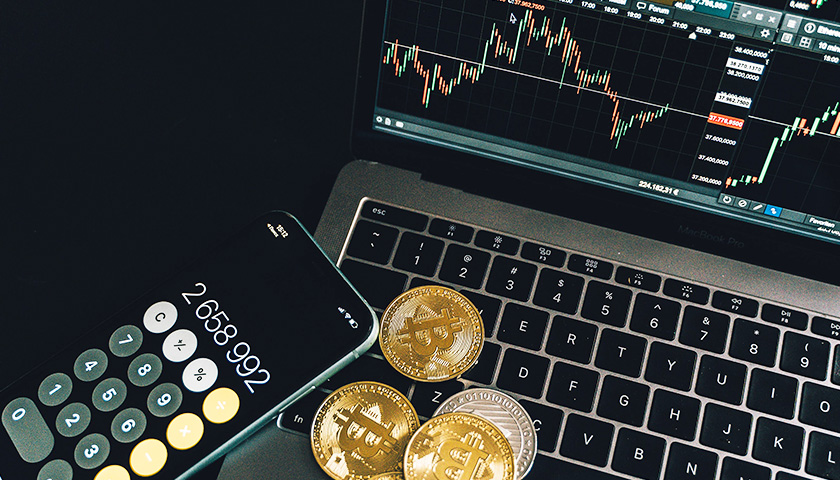by John Jiang
Sam Bankman-Fried’s arrest makes for a fitting final act to this chapter of cryptocurrency history. The internet prodigy-turned-supervillain had been at large for a whole month since the spectacular collapse of his crypto trading platform, FTX. But Sam is no Butch Cassidy. Rather than vanishing, he spent his time tweeting, giving interviews, and most stupefying of all, making appearances at high-powered New York Times business conferences alongside the likes of Mark Zuckerberg and Janet Yellen. Tucker Carlson speculated at the time that Bankman-Fried’s lavish donations to Democratic politicians had afforded him de facto immunity from prosecution. It seems that the goodwill has now run out.
Crowdsourced prediction site Metaculus currently thinks that Bankman-Fried will get 90 months behind bars. That would be a generous sentence for losing north of $1 billion of customer funds through fraud. Yet his actions have amounted to what looks like a death penalty for the wider crypto ecosystem, which had only a year ago felt on the verge of facilitating a revolution in mainstream finance.
Prior to FTX’s collapse, the term cryptocurrency evoked techno-mystique, Silicon Valley visionaries, and dark web crimelords. Now, it has Sam Bankman-Fried’s unkempt mug stamped on it. The haters were right all along: perhaps it really was just another Ponzi scheme underneath all that babble about decentralized finance.
At minimum, a long crypto winter is coming. Retail money will flee, burned one too many times. Institutional investors will be a lot shyer about bankrolling any project with blockchain, DeFi, or NFT in the description. The drying up of capital will kill many struggling currencies while causing would-be founders to gravitate back toward traditional tech or finance, leaving only the hardiest survivors.
However, just as many private actors are departing from the digital currency space, governments look set to make an entry. State intervention in cryptocurrency markets is in vogue, with both the European Union and the Bank of England closing in on regulatory solutions. U.S. Secretary of the Treasury Janet Yellen asserted in November that FTX’s collapse “[demonstrates] the need for more effective oversight of cryptocurrency markets.” Biden has spent the last year, even before the recent market meltdowns, saying much the same.
Proposals for regulation have so far been light on specifics, consisting (in the usual bureaucratic manner) of plans to draft further plans. Crypto regulation also seems oxymoronic in concept: the original point of bitcoin was its ability to skirt government fiat. What states are likely to try to do is to control those access points through which dollars flow into crypto coins and vice versa. This includes clamping down on mainstream crypto exchanges with investment barriers, licensing requirements, and KYC (Know Your Customer) rules.
These interventions would create a two-tiered system. Cybercriminals and drug peddlers have online financial ecosystems powered entirely by privacy coins like Monero that are essentially impossible to regulate. Legitimate retail users, on the other hand, would experience any regulations in full.
The danger here is that governments might end up robbing crypto of its purpose. If every transaction has its size, impetus, and participants logged by a centralized authority, then the technology has few use cases outside of facilitating overpriced monkey pictures. Turning the crypto industry into an inferior clone of traditional finance would be equivalent to sinking it.
In the grand scheme of things, regulations would also do little to stem the losses being experienced by retail investors. The $1 billion of customer assets lost by FTX is dwarfed by the over $2 trillion that the industry as a whole has shed so far, having cratered around two-thirds from its peak value in late 2021. This meltdown would not have been prevented by requiring ID to invest or labeling crypto assets as “risky”; just ask anyone who piled into Nasdaq-100 at the top.
The stimulus-stuffed, low interest rate environment of the pandemic years inflated every asset class beyond reason. At the peak of the hysteria, analysts were noting with alarm that the most unprofitable tech companies were experiencing the greatest gains in stock price. The crypto community has its own expression for this phenomenon: “Scams pump the hardest.” And as the faucet is turned off, scams crash the fastest. When bureaucrats survey the carnage happening in crypto — and indeed, everywhere else — they are seeing the results of their own handiwork.
No Lesser of Two Evils
Investors were mistaken to trust a psychopath like Sam Bankman-Fried. But the state is hardly a suitable replacement. Governments have many reasons to dislike cryptocurrency, only some which have any relation to the well-being of their citizenry. Never forget that during the 2021 trucker protests in Canada, Trudeau’s government ordered banks to freeze the accounts of suspected protestors. This was an act of flagrant authoritarianism, and also precisely the sort of the thing that bitcoin was designed to prevent.
Many states would prefer to have a monopoly on digital currency. Specifically, Central Bank Digital Currencies (CBDC) would take technologies that have been pioneered by market anarchists and turn them into assets of institutions like the Fed. A government that successfully neuters decentralized cryptocurrencies while rolling out a CBDC will be able to achieve omnipresence in its economic system; every transaction and balance will be accessible in real time and with perfect information. Individuals that the government dislikes could see all of their assets vanish in an instant. During recessions, states could even attempt to incentivize consumers to spend by attaching “expiry dates” to CBDC dollars. These are extreme examples, but the point is that bureaucrats should not be granted this level of access to or control over private finances. And certainly, the U.S. should be wary of authoritarian governments abroad (and even as nearby as Canada) looking to imitate its CBDC technology.
Fortunately, one does not have to choose between Sam Bankman-Fried and Uncle Sam. FTX was never the point of crypto. Such centralized exchanges are popular because they are convenient, but the idea of entrusting a middleman with one’s assets is anathema to the principles that Satoshi Nakamoto developed in his original bitcoin white paper. Had the crypto industry adhered to these principles, the question of Sam Bankman-Fried’s trustworthiness would have been entirely irrelevant.
A great number of decentralized exchanges (DEXs) already exist. Users of these platforms retain control of their coins. A correctly-implemented DEX is effectively immune to the kinds of fraud and malfeasance that occurred behind the scenes at FTX, and it is considered best practice to use them rather than centralized exchanges. The fact that the latter came to dominate the crypto industry reflects how badly the monetary environment had distorted the cost-benefit analyses of retail investors; any concern for due diligence on the underlying technology was borne away by a tidal wave of easy money. Now that the tide has receded, this careless reliance on centralization has been appropriately punished, and is less likely to make an appearance the next time that crypto is in vogue again. Such is the blessing of the bear market.
There are many longtime bitcoin skeptics who are glad to see crypto’s collapse. By their reckoning, the government ought to stand aside, for regulating cryptocurrencies would be tantamount to legitimizing them. Those who see more promise in technology should adopt a similar attitude: let it burn, crash, and implode. Shake out all of the scams and charlatans, and keep what’s left outside of the state’s idea of legitimacy. Crypto can only become stronger for it.
– – –
John Jiang is an alumnus of The American Spectator’s Young Writers Program.
Photo “Cryptocurrency” by Alesia Kozik.








